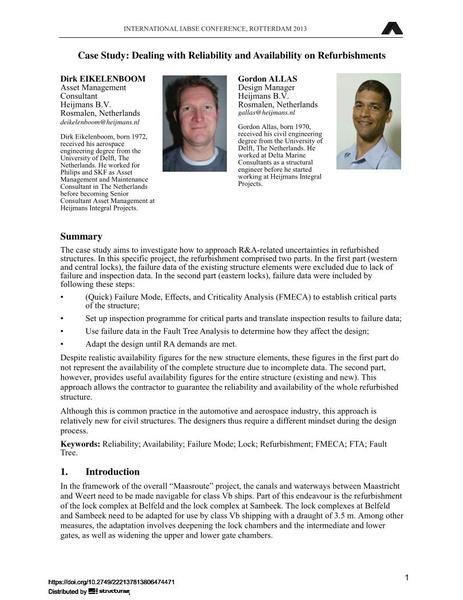Case Study: Dealing with Reliability and Availability on Refurbishments

|
|
|||||||||||
Détails bibliographiques
| Auteur(s): |
Dirk Eikelenboom
Gordon Allas |
||||
|---|---|---|---|---|---|
| Médium: | papier de conférence | ||||
| Langue(s): | anglais | ||||
| Conférence: | IABSE Conference: Assessment, Upgrading and Refurbishment of Infrastructures, Rotterdam, The Netherlands, 6-8 May 2013 | ||||
| Publié dans: | IABSE Conference, Rotterdam, May 2013 | ||||
|
|||||
| Page(s): | 130-131 | ||||
| Nombre total de pages (du PDF): | 7 | ||||
| Année: | 2013 | ||||
| DOI: | 10.2749/222137813806474471 | ||||
| Abstrait: |
The case study aims to investigate how to approach R&A-related uncertainties in refurbished structures. In this specific project, the refurbishment comprised two parts. In the first part (western and central locks), the failure data of the existing structure elements were excluded due to lack of failure and inspection data. In the second part (eastern locks), failure data were included by following these steps:
Despite realistic availability figures for the new structure elements, these figures in the first part do not represent the availability of the complete structure due to incomplete data. The second part, however, provides useful availability figures for the entire structure (existing and new). This approach allows the contractor to guarantee the reliability and availability of the whole refurbished structure. Although this is common practice in the automotive and aerospace industry, this approach is relatively new for civil structures. The designers thus require a different mindset during the design process. |
||||
| Mots-clé: |
écluse
|
||||
